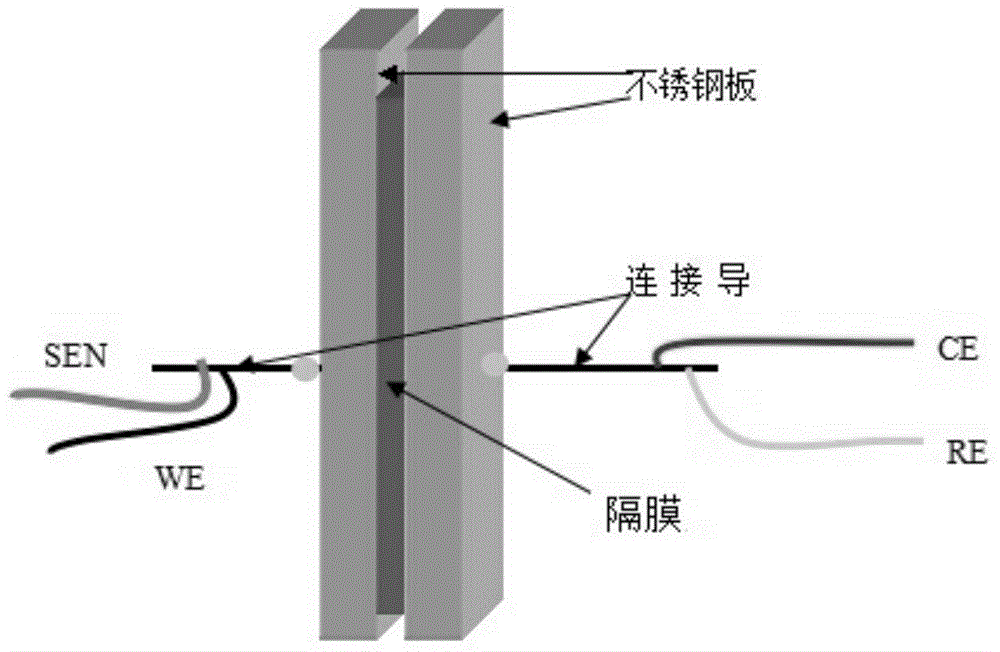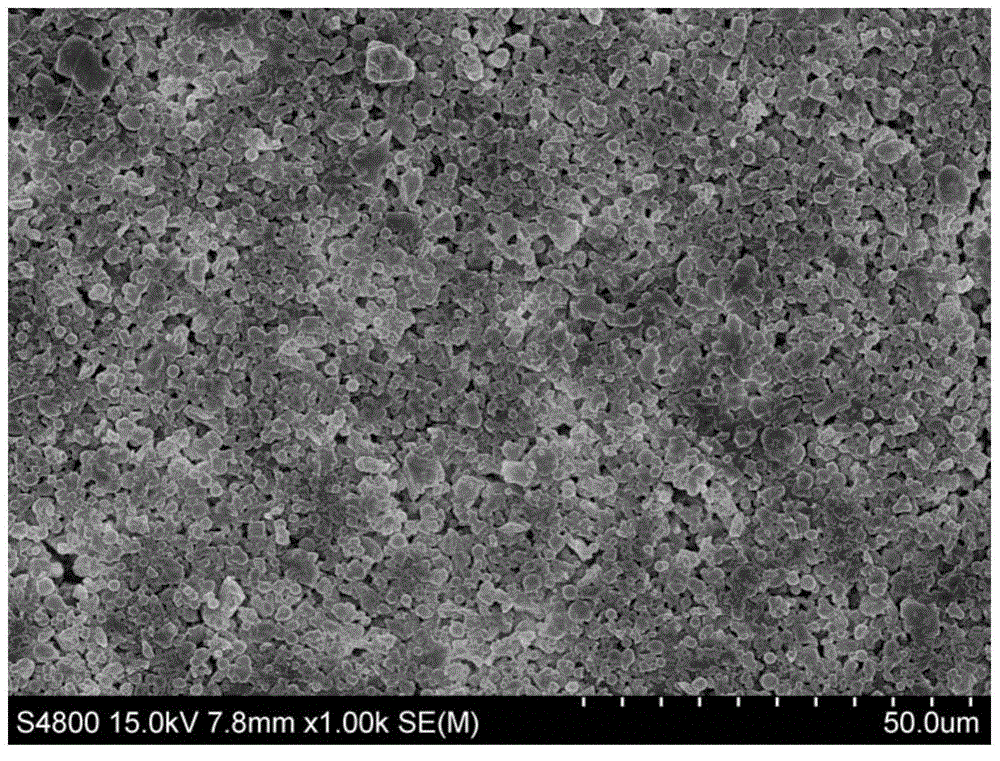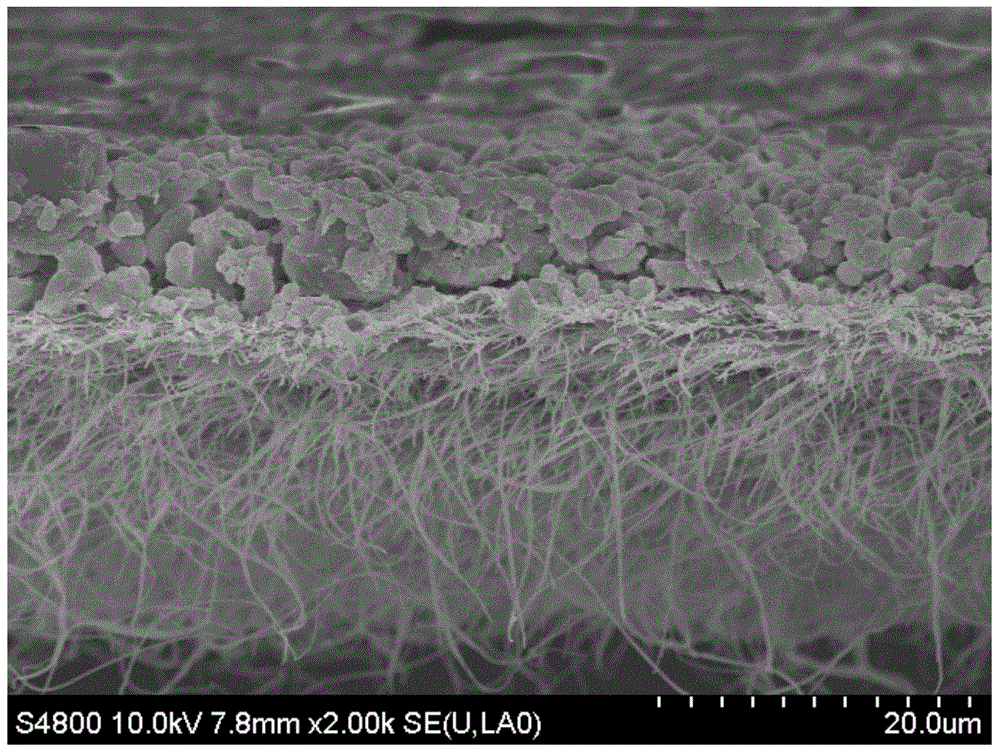Thermal shutdown composite diaphragm and application thereof
A composite diaphragm and thermal shutdown technology, applied in the field of electrochemistry, can solve the problems of non-woven substrates without thermal shutdown function, explosion, and inability to effectively prevent the development of battery reactions, etc.
- Summary
- Abstract
- Description
- Claims
- Application Information
AI Technical Summary
Problems solved by technology
Method used
Image
Examples
Embodiment 1
[0054]Mix 1g of spray-dried and granulated PE balls (PE molecular weight 10000-20000) with sodium carboxymethylcellulose (CMC) and styrene-butadiene rubber (SBR) at a mass ratio of 95:2:3, and put it into deionized water Mix 10ml of the solution with acetone (3:1, v:v), ball mill the obtained slurry overnight, ultrasonically disperse the mixed slurry for 20 minutes, and apply the obtained slurry to membrane coating. The thermal shutdown composite diaphragm was fabricated with PI nonwoven fabric as the thermal support layer. The resulting slurry was evenly coated on one side of the PI non-woven membrane, and the thickness of the coating layer was controlled at 3 μm. Use an electric heating plate to preheat at 60°C, wait for most of the solvent to volatilize, put it in a vacuum oven and dry it overnight at 60°C to completely remove the solvent, and obtain a non-woven composite diaphragm with a thermal shutdown temperature from 115°C to >200°C (scan Electron microscope photos su...
Embodiment 2
[0059] Mix 10g of spray-dried and granulated PP balls (PP molecular weight 100,000-200,000) with sodium carboxymethylcellulose (CMC) and styrene-butadiene rubber (SBR) in a mass ratio of 90:4:6, and put them into deionized water Mix 150ml of the solution with acetone (4:1, v:v), ball mill the obtained coating slurry overnight, and ultrasonically disperse the mixed slurry for 20 minutes, and apply the obtained slurry to membrane coating. The composite diaphragm was fabricated with PMIA electrospun microporous membrane as thermal support layer. The obtained slurry is evenly coated on both sides of the PMIA electrospun microporous membrane, and the thickness of the coating layer is controlled at 5 μm. Preheat with an electric heating plate at 80°C, wait for most of the solvent to volatilize, put it in a vacuum oven at 80°C and dry overnight to completely remove the solvent, and obtain a composite diaphragm with a thermal shutdown temperature from 155°C to >200°C. The resulting d...
Embodiment 3
[0062] Mix 100g of spray-dried and granulated PE balls (PE molecular weight 1,000,000-2,000,000) with gelatin and polyvinyl alcohol (PVA) in a mass ratio of 80:8:12, and put them into deionized water and ethanol (4:1, v: v) Mix 1 L of solution, ball mill the obtained ceramic slurry overnight, ultrasonically disperse the mixed slurry for 50 minutes, and apply the obtained slurry to membrane coating. The thermal shutdown composite diaphragm was fabricated with PET non-woven fabric as the thermal support layer. The obtained slurry was evenly coated on one side of the PET non-woven membrane, and the thickness of the coating layer was controlled at 1 μm. Preheat with an electric heating plate at 70°C, wait for most of the solvent to volatilize, put it in a vacuum oven at 70°C and dry overnight to completely remove the solvent, and obtain a non-woven composite diaphragm with a thermal shutdown temperature from 115°C to >180°C. The resulting diaphragm was clamped between two metal s...
PUM
| Property | Measurement | Unit |
|---|---|---|
| Melting point | aaaaa | aaaaa |
| Thickness | aaaaa | aaaaa |
| Melting point | aaaaa | aaaaa |
Abstract
Description
Claims
Application Information
 Login to View More
Login to View More - R&D
- Intellectual Property
- Life Sciences
- Materials
- Tech Scout
- Unparalleled Data Quality
- Higher Quality Content
- 60% Fewer Hallucinations
Browse by: Latest US Patents, China's latest patents, Technical Efficacy Thesaurus, Application Domain, Technology Topic, Popular Technical Reports.
© 2025 PatSnap. All rights reserved.Legal|Privacy policy|Modern Slavery Act Transparency Statement|Sitemap|About US| Contact US: help@patsnap.com



